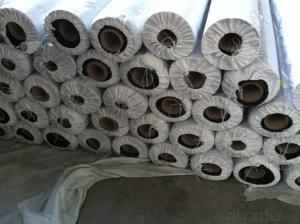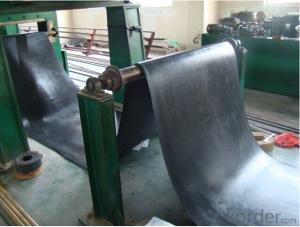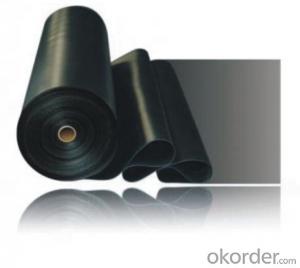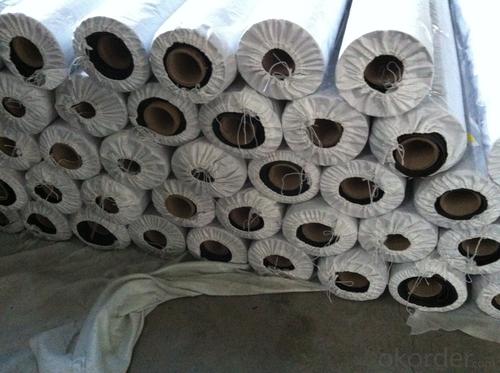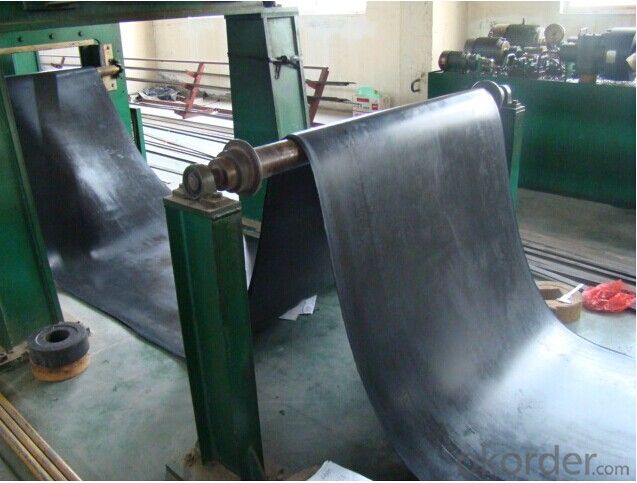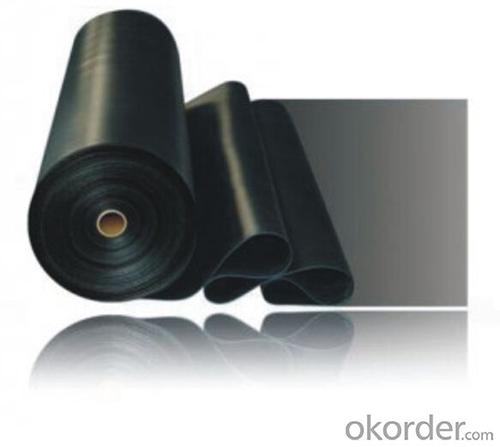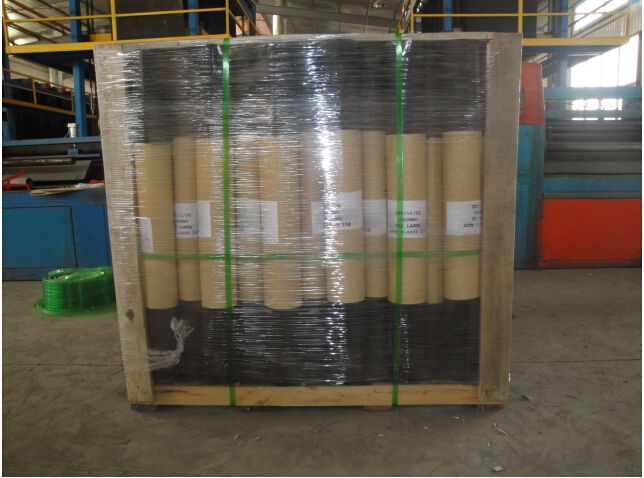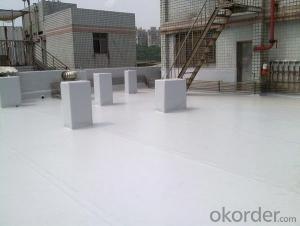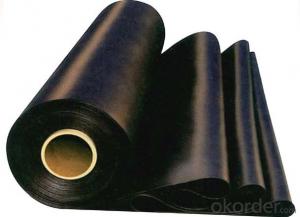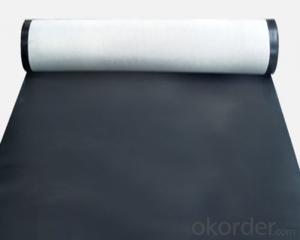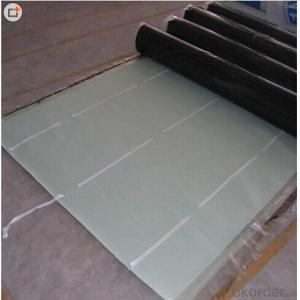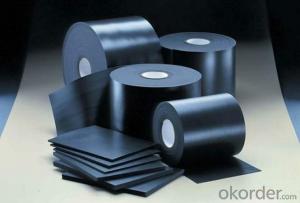Vulcanized/Sulfuretted EPDM Rubber Roofing Waterproof Membrane
- Loading Port:
- Qingdao
- Payment Terms:
- TT OR LC
- Min Order Qty:
- 2000 m²
- Supply Capability:
- 100000 m²/month
OKorder Service Pledge
OKorder Financial Service
You Might Also Like
1.0mm /1.2mm/1.5mm EPDM rubber roofing waterproof membrane
1. Product Description
EPDM waterproof membrane is of high elasticity among high polymer waterproof materials and becomes a world-popular waterproofing material. KEQIANG EPDM waterproof membrane is made from ternary ethylene-propylene rubber, which is designed for waterproofing of exposed and non-exposed applications. KEQIANG EPDM waterproof membrane production adopts the world-advanced equipment of cold feeding extrusion and continuous vulcanization technology.
2. Features
1 Excellent physical and mechanical performance
2 High tearing resistance
3 Good deformation adaptability
4 High puncture resistance
5 High aging resistance
6 High UV resistance
3. Application
l Roofs, Basement, Toilet
l Industrial and civil building waterproofing
l Geosynthetic liner for swimming pool, channels, irrigation system
l Especially suit for projects with high requirements in durability, anti-corrosion and deformation
4. Specification
Type | EPDM Waterproof Membrane | |||
Material | EPDM Rubber | |||
Thickness | 1.0mm | 1.2mm | 1.5mm | 2.0mm |
Size | 1.2m(width) * 20m(length)/roll | |||
Type | Vulcanized | |||
Pattern | Non-reinforced(homogeneous) | |||
Packing | 24sqm--80sqm/roll, with plastic bag | |||
Color | Black | |||
Application | Roofs, basement, pond, Lake, steel structure roof, swimming pool, underground, tunnel, etc | |||
4. Product Show:
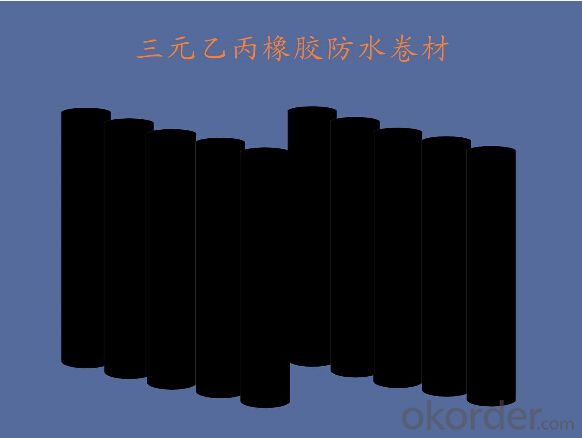
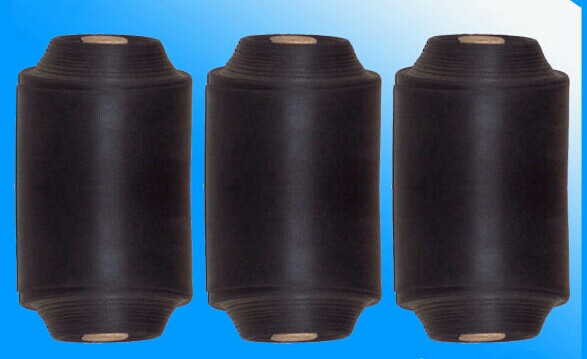
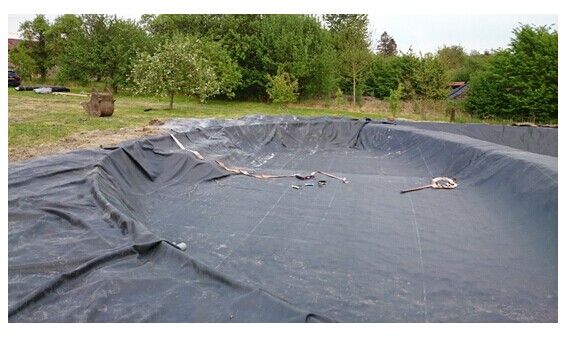
- Q: Are waterproofing membranes resistant to UV rays?
- Yes, waterproofing membranes are designed to be resistant to UV rays. UV rays from the sun can degrade and damage many materials over time, including certain types of waterproofing membranes. To prevent this, manufacturers often incorporate UV stabilizers into the membranes during the production process. These stabilizers help to protect the membrane from the harmful effects of UV rays, such as fading, cracking, and deterioration. Additionally, some waterproofing membranes may have an outer layer or coating that provides an extra layer of UV protection. However, it is important to note that the level of UV resistance can vary depending on the type and quality of the waterproofing membrane, so it is advisable to consult the manufacturer's specifications and recommendations for the specific product being used.
- Q: Can a waterproofing membrane be used in basements and foundations?
- Basements and foundations can benefit greatly from the use of a waterproofing membrane. It is highly recommended to apply this protective layer in order to safeguard against water infiltration and moisture-related problems. Typically, the membrane is applied on the outer side of the foundation walls and basement floors, effectively creating a barrier that prevents water from permeating through the concrete. This essential measure ensures that the basement and foundation remain dry, minimizing the risk of water damage, mold growth, and structural complications. There are several types of waterproofing membranes available, including bituminous, rubberized asphalt, and liquid-applied options. This variety allows for flexibility when selecting the most suitable option according to the specific project requirements. Ultimately, installing a waterproofing membrane is a reliable means of improving the overall resilience and longevity of basements and foundations.
- Q: Are waterproofing membranes suitable for underground parking garages?
- Yes, waterproofing membranes are suitable for underground parking garages. Underground parking garages are constantly exposed to groundwater and moisture, which can lead to water infiltration and damage to the structure. Waterproofing membranes provide an effective solution to prevent water penetration and protect the concrete structure from deterioration. Waterproofing membranes are designed to create a barrier against water and moisture, preventing them from entering the garage. These membranes are typically applied to the exterior walls, foundation, and floor slab of the parking garage. They are made of durable materials such as modified bitumen, polyurethane, or rubberized asphalt, which can withstand the harsh conditions of underground environments. By installing waterproofing membranes in underground parking garages, the risk of water damage, such as concrete cracking, corrosion of reinforcement steel, and mold growth, is significantly reduced. The membranes act as a protective layer, ensuring the longevity and structural integrity of the parking garage. Furthermore, waterproofing membranes can also help in minimizing the potential for vapor transmission, which can lead to condensation and humidity issues inside the parking garage. This is especially important for underground parking garages located in regions with high water tables or areas prone to heavy rainfall. Overall, waterproofing membranes are an essential component in the construction or renovation of underground parking garages. They provide a reliable and long-lasting solution to protect the structure from water infiltration, ensuring the safety and durability of the parking facility.
- Q: BS waterproofing membrane is modified? There are not a few thick drawings, how to do
- For example, class Ⅱ waterproof basement waterproof, if only a SBS waterproofing membrane, then its thickness requires 4 mm; if there are other waterproof layer, you can use 3mm.
- Q: Can a waterproofing membrane be used for disaster relief structures?
- Yes, a waterproofing membrane can be used for disaster relief structures. Waterproofing membranes are designed to provide protection against water infiltration, which can be crucial in disaster situations where structures need to be protected from flooding or heavy rains. Using a waterproofing membrane can help ensure that relief structures are more resilient and durable, enhancing their effectiveness in providing shelter and protection during and after a disaster.
- Q: Can a waterproofing membrane be applied over existing waterproofing layers?
- Yes, a waterproofing membrane can be applied over existing waterproofing layers. However, it is important to assess the condition of the existing layers to ensure they are sound and can provide a proper substrate for the new membrane. Additionally, proper surface preparation and compatibility between the existing layers and the new membrane should be considered to ensure a successful and long-lasting waterproofing system.
- Q: Can a waterproofing membrane be applied on both interior and exterior surfaces of a structure?
- Yes, a waterproofing membrane can be applied on both interior and exterior surfaces of a structure.
- Q: Can a waterproofing membrane be used in laundry rooms?
- Yes, a waterproofing membrane can be used in laundry rooms. Laundry rooms are areas where water and moisture are commonly present due to washing machines, sinks, and other water-related activities. Installing a waterproofing membrane in the laundry room can help prevent water damage to the walls, floors, and other structural components. It acts as a barrier against water penetration, ensuring that any water or moisture that accumulates in the room does not seep into the underlying surfaces. This can be particularly beneficial in laundry rooms located on upper floors or in areas prone to high humidity or flooding. By using a waterproofing membrane, homeowners can protect their laundry rooms from potential water-related issues, such as mold growth, rotting, or structural damage.
- Q: Can a waterproofing membrane be used on below-grade walls?
- Yes, a waterproofing membrane can be used on below-grade walls. In fact, it is highly recommended to use a waterproofing membrane on below-grade walls to protect them from water infiltration and moisture damage. Below-grade walls are particularly vulnerable to water penetration due to their proximity to the ground and potential for hydrostatic pressure. A waterproofing membrane acts as a barrier, preventing water from seeping into the walls and causing issues such as mold, mildew, rot, and structural damage. It helps to keep the interior of the building dry, preventing potential moisture-related problems.
- Q: Are waterproofing membranes resistant to freeze-thaw cycles?
- Yes, waterproofing membranes are generally resistant to freeze-thaw cycles. These membranes are designed to withstand extreme weather conditions, including freezing temperatures and the subsequent thawing process. The materials used in waterproofing membranes are often chosen for their durability and ability to expand and contract without compromising their waterproofing properties. This resistance to freeze-thaw cycles ensures that the membranes remain intact and effective in preventing water penetration, even in areas where temperature fluctuations occur frequently.
Send your message to us
Vulcanized/Sulfuretted EPDM Rubber Roofing Waterproof Membrane
- Loading Port:
- Qingdao
- Payment Terms:
- TT OR LC
- Min Order Qty:
- 2000 m²
- Supply Capability:
- 100000 m²/month
OKorder Service Pledge
OKorder Financial Service
Similar products
Hot products
Hot Searches
Related keywords
